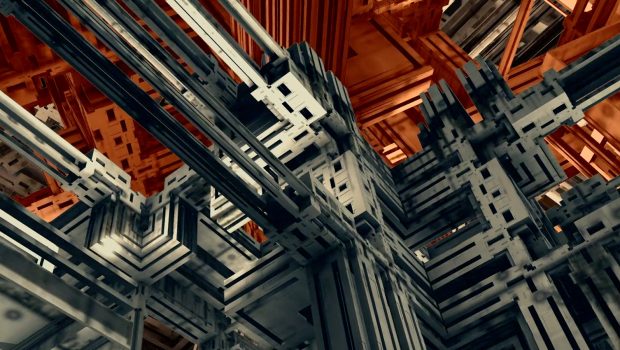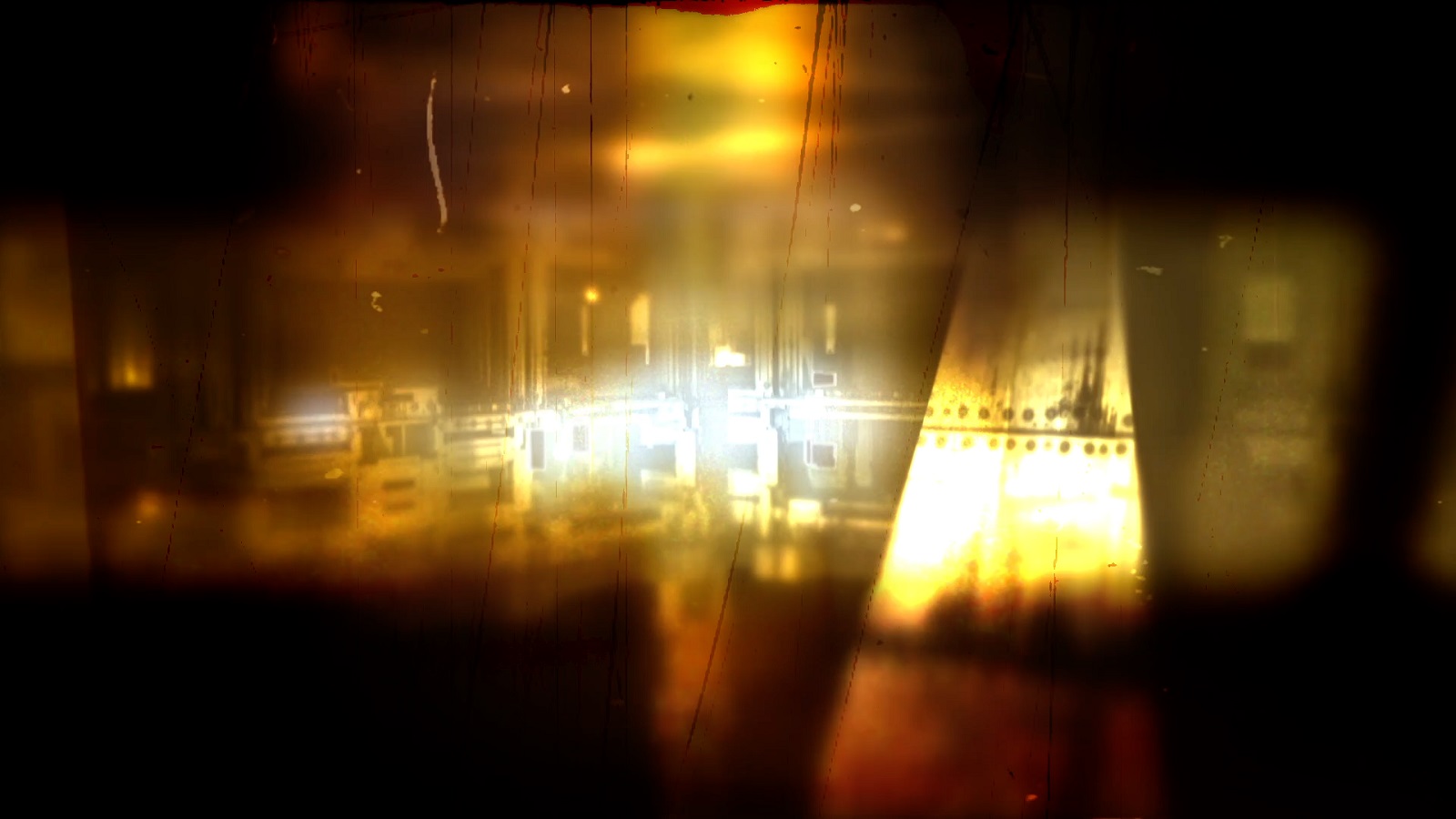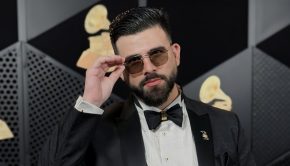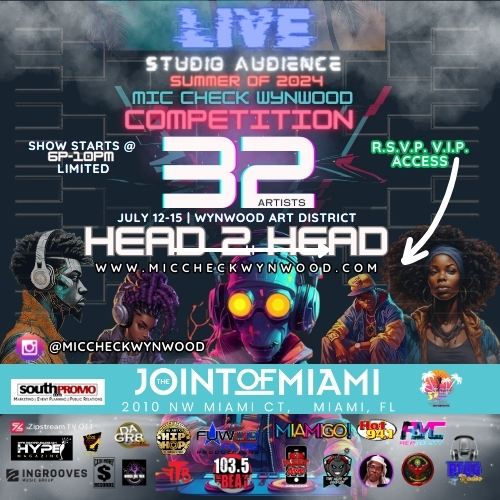Sonarpilot Talks ‘The Mirage Project’
Art that inspires inner reflection: That’s the mission of Sonarpilot, the alter ego of producer and digital designer Michael Moppert. Through Moppert’s genre-bending electronic soundscapes and imaginative visual voyages by fractal artist Roger Mader, audiences are transported into The Mirage Project, a world of audio-visual contemplations on big contemporary issues like Artificial Intelligence, cosmology, the multiverse, alien life, and more. Upon its release in 2020, The Mirage Project, Season 1 received accolades for its sound and visual elements, consisting of six epic journeys through mind, science, time, and space.
This dynamic duo is back at it again for The Mirage Project, Season 2. They are joined by London-based DJ Jonny Miller to help them map out the farthest reaches of the Mirage cosmos – and the human imagination. The next chapter to be released is “Mirage V: Quantum Factory,” aimed at “Unleashing the Power of Superintelligent Matter.”
Embark on an extraordinary journey into the very essence of our existence with “Mirage V: Quantum Factory.” Prepare to be transported deep below the surface of our familiar reality into the elusive realm of subatomic particles—the birthplace of all matter. Modern physics has unveiled the enigmatic world where energy particles flicker in and out of existence within nanoseconds, governed by laws that elude our senses. “Quantum Factory” envisions a future where humanity harnesses this extraordinary subatomic domain, mastering the mysterious principles of quantum superposition and entanglement. In this realm, nanobots within the factory defy conventional limitations, simultaneously existing in multiple states and exploring mind-boggling assembly configurations at unimaginable speeds.
At the heart of Quantum Factories lies the unprecedented fusion of advanced AI systems with nanotechnology, giving birth to an awe-inspiring phenomenon—superintelligent matter. Superintelligent matter possesses an extraordinary array of abilities: It constantly analyzes its surroundings, dynamically adapts its structure and composition, and optimizes performance to meet ever-changing conditions. In fact, superintelligent matter behaves like a live organism. Its emergence is the next giant step of evolution. And it will be the end of human civilization as we know it.
The soundtrack of this Mirage echoes the hard sci-fi visuals of the video, oscillating between a techno-infused, dark soundscape infused with luscious synths and a gritty cinematic atmosphere. Driving electronic beats build the steely backdrop for an enthralling audio journey. Brimming with illuminated electronics, humming neural networks, and the resounding echoes of an industrial warehouse, hidden in the depths of subatomic space, “Quantum Factory” is a truly captivating ride.
We got Sonarpilot to weigh in on a few things related to the new offering
How do you want listeners to feel when listening to “Quantum Factory”?
There’s a lovely quote by Albert Einstein, who said: “Art is standing with one hand extended into the universe and one hand extended into the world.” This is the place where we want to be with my work.
“Quantum Factory” is a fictional deep dive into the hidden wonders that lie beneath the surface of our everyday reality. Right under the veneer of everything we see, there exists a vast and awe-inspiring subatomic cosmos of inexplicable phenomena, which serves as the very foundation of our existence and the world surrounding us – from the minuscule grains of sand to the grandeur of galaxy clusters in the universe.
“Quantum Factory” aims to evoke a sense of wonder, reminding listeners of the immense complexity and interconnectedness of all things. It seeks to transport the audience on a sonic journey that ignites their imagination and offers a glimpse into the mysterious fabric of existence.
What makes Sonarpilot different from other musicians?
I think what is fairly unique about my work is the importance of visuals in my work. In the last few years, I have developed a series of deeply immersive audiovisual journeys that I call The Mirage Project. In the 1970s, bands created these beautiful concept albums, combining rich visuals of the of cover artwork, liner notes, and a narrative frame that made the tracks part of a compelling story. The Mirage Project started in 2020 and is now in season 2. Think of it as my own audiovisual version of a contemporary concept album.
In addition to this larger framework that I believe makes my work fairly unique, there is also the meticulous process of how I create and combine music and visuals. Typically, there is a piece of music, and a video is produced when the track is finished. My creative approach is different: I engage in an almost symbiotic relationship between these two artistic elements. I develop sound and visuals in parallel, going back and forth between the two in many iterations. This is time-consuming. The production of “Quantum Factory” took almost two months. Other artists produce a track in two days; the video shoot takes one day, plus one day of post-production.
My approach ensures that the music and visuals harmoniously support one another, resulting in an optimal fusion that generates a deeply immersive experience for the audience.
How is “Quantum Factory” unique from other projects of yours?
“Quantum Factory” pushes the visual envelope as it oscillates between the aesthetics of a science fiction film and abstract art.
Compared to the previous season of The Mirage Project, we developed innovative techniques to construct visually layered compositions. These layers not only add depth but also introduce dynamic animations, further amplifying the visual impact. The result is a mesmerizing tapestry of imagery that captivates the viewer. “Quantum Factory” is taking this experience to the next level.
How has your sound evolved since you started releasing music?
That is a long journey. I released my first record in the 1980s, at the time of early British synth bands. At the beginning of the 90s, my sound became darker and more electronic, with some ambient elements. I stopped making music for a while, and when I got back into the producer’s chair, I made downtempo electronica and underground house. From there, my sound has expanded into a diverse array of soundscapes. I have explored and incorporated neo-classical elements, infusing my compositions with a cinematic quality that harmonizes with the rich visuals of The Mirage Project.
I thoroughly enjoy embracing a broader sonic palette; it opened new creative avenues for me. And I hope the fusion of diverse musical influences and a more cinematic approach is making The Mirage Project an even more compelling and immersive audio-visual experience.
How did you go about creating the music video for “Quantum Factory”?
I knew from the beginning that I wanted a rough, gritty sound combined with elements of a sci-fi movie. I already had the first drafts of the visuals, and I used these as inspiration for the somber, driving atmosphere of the track. As always when I create a new Mirage, I jotted down a few musical ideas and began to combine them with the animations that our rendering farm was producing.
Going back and forth between music and visuals, the soundtrack evolved into a rich sonic tapestry. I know this process very well; I learned to trust it. It always amazes me how it takes me to a place that I have not planned. This is the joy of the creative work, this exploration of new territory.
When did you first start making music?
That was back in the late 1970s. As a teenager, music had become my emotional home; it was a key element of my identity. But, like most people, I was a consumer. I hadn’t learned an instrument; I was not making music myself.
One day, a friend of mine asked me if I would tag along to a guitar lesson. I thought, why not? And from day one, I was completely hooked. I could not put down that guitar. Pretty soon, I was playing in a band. Those were exciting times, with the revolution of punk and new wave. One thing led to another. I began to play around with a four-track cassette recorder, layering tracks onto each other, and a few years later, I opened a recording studio together with a friend of mine.
We produced bands, and when the studio was not booked, I worked on my own material, often deep into the night. That was a great time; I thoroughly enjoyed it.
The “Quantum Factory” music video transports viewers into a trippy futuristic reality. What do you see in store for the future of our world?
As we continue to advance technologically, I envision a future where our relationship with technology becomes increasingly intertwined. It holds the promise of transformative experiences and connections that transcend physical boundaries. However, alongside this advancement, it is crucial that we maintain a balance, ensuring that we preserve our connection to nature, spirituality, and human emotions.
In this future, we have the potential to harness the power of innovation, to deepen our understanding of ourselves, our environment, and the cosmos. As we explore the realms of quantum mechanics and delve into the mysteries of the universe, we may gain profound insights into our place within the vast tapestry of existence.
At the same time, this path can easily lead into very dangerous territory. Advances in areas such as Artificial Intelligence will have a profound and very disruptive impact on our society. There is even the potential that we lose control over these technologies as they advance with almost lightning speed. We are living in very interesting but scary times.
What can you tell fans about the future of Sonarpilot?
There are three more episodes in Season 2 of The Mirage Project, which we will release until the end of the year. That will keep me fairly busy. In parallel, I am working on shorter editions of some of the material we have produced in the last few years. The original Mirages are very long and visually opulent, and there’s a ton of material that we have generated for the new season that would work very well in smaller, shorter formats.
As a side project, I have been creating NFTs, very short animations that are released on the blockchain. Some of those works are currently part of an exhibition at the renowned NFT Gallery in New York.
We are also thinking about a series of remixes. In the past, I have worked with exciting electronic artists from all around the globe to create remixes of my music. The season 2 soundtracks are very rich in content and perfect for reworking into something new.
The last project idea is to take the Mirages to larger, fully immersive spaces. It would be great to physically experience these worlds; that would be a truly amazing journey.
And finally, there’s, of course, the question of how we could push the envelope even further to create another season of The Mirage Project that is even wilder and more abstract! One avenue I am currently exploring is the use of Artificial Intelligence to create new, amazing worlds and to continue the fascinating journey through the Mirage cosmos.
Sonarpilot socials:
Twitter / Facebook / Instagram: @sonarpilot
https://www.themirageproject.
https://www.facebook.com/
https://twitter.com/sonarpilot
https://www.instagram.com/










































